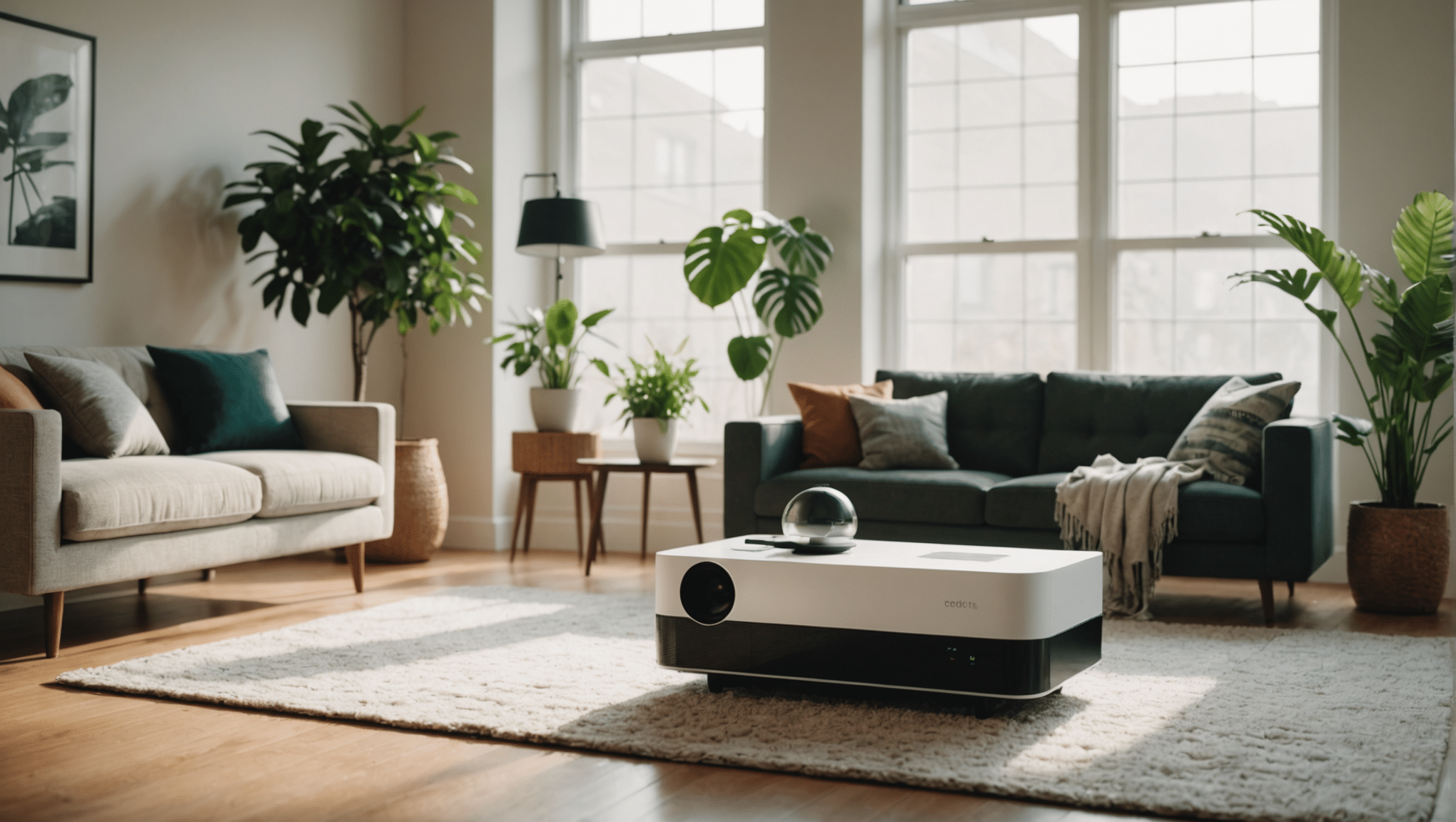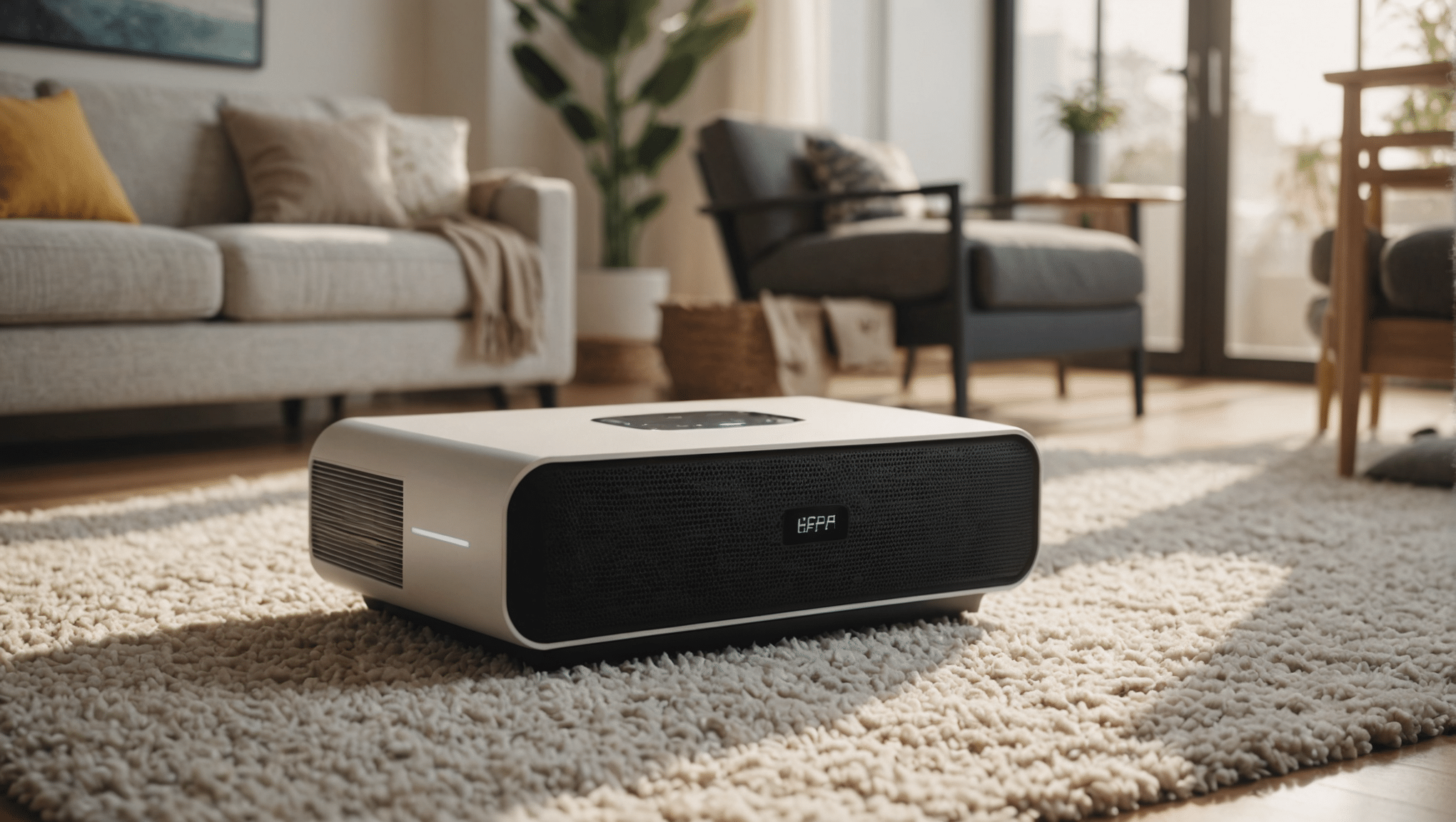
Discover How Air Purifiers Can Transform Your Home’s Air Quality
DISCOVER the POWER behind AIR PURIFIERS and how they WORK to REMOVE ALLERGENS and POLLUTANTS, enhancing INDOOR AIR QUALITY for a healthier, cleaner living space.
Last Updated on 06/10/2025
Air purifiers are devices designed to filter and cleanse indoor air, becoming increasingly crucial for maintaining healthy environments. This article explains how air purifiers operate, focusing on their role in enhancing air quality and supporting health, providing essential insights for those considering a purchase or seeking to understand their mechanism.
How do air purifiers work to clean air?
Air purifiers clean air by using filters or electrostatic methods to trap and remove contaminants like dust, pollen, smoke, and bacteria. HEPA filters capture small particles, while activated carbon filters eliminate odors and gases. Some purifiers use UV light to kill microbes, ensuring improved indoor air quality.
Understanding Air Purifier Mechanisms Better
- Learn how **HEPA** filters capture microscopic particles.
- Discover the role of **activated carbon** in trapping gases.
- Understand how **UV purifiers** eliminate viruses and bacteria.
- Explore the **science** behind ionic purifiers and charged particles.
- Find out how smart features adjust for **optimal air** quality.
- See how purifiers **buffer against** outdoor pollution.
- Uncover benefits for specific **household needs** and situations.

Types of Air Purifiers Explained
Air purifiers come in various shapes and sizes, each tailored to tackle specific air quality woes. HEPA purifiers reign supreme in the realm of removing pesky pollen and particulates as small as 0.3 microns. Their trusty HEPA filter captures these microscopic nuisances with ease, ridding your living room of unseen threats. But beware: not all air purifiers are created equal. Different types of air purifiers work best for different air quality concerns.
Activated carbon filters step into the spotlight when it comes to trapping volatile organic compounds, odors, and gases that slip past less sophisticated systems. Meanwhile, UV purifiers take a shine to obliterating microorganisms like bacteria and viruses, zapping them into oblivion with a dose of ultraviolet light. For those who want a gadget with a sci-fi twist, ionic purifiers release charged ions to bind with airborne particles, making them fall like heavy raindrops.
If picking an air purifier feels like Goldilocks’ search for ‘just right,’ you’re in luck—there’s one to suit every household. Each type caters to specific needs, whether it’s dander from a furry companion, smoke from a recent experiment in cooking, or simply everyday air pollution. Understanding the technology behind these purifiers will help unlock the path to crisp, clean air quality.
| Type | Key Benefit | Suitable For |
|---|---|---|
| HEPA Purifiers | Removes particles as small as 0.3 microns | Allergy sufferers, dust removal |
| Activated Carbon Filters | Traps volatile organic compounds and odors | Odor elimination, chemical sensitivities |
| UV Purifiers | Eliminates microorganisms like bacteria and viruses | Germ elimination, improved hygiene |
| Ionic Purifiers | Neutralizes airborne particles using charged ions | General air cleaning, mold and dust control |
Mechanics: How Air Purifiers Work
At the core of every air purifier lies its ability to sieve through particles and pollutants with precision—like a vacuum cleaner for the sky! Filters do much of the heavy lifting, from straining out fine dust particles to squashing allergen-laden pollen. The heroes of this dust-busting saga are often the HEPA filter in a HEPA purifier and the pesky particulate air that it conquers with every swoosh.
But filters alone are not where the story ends. Tech buffs delight in learning how advanced features, such as sensors and mobile apps, keep tabs on air quality, adjusting the purifier’s settings as needed to maintain a breath of fresh air. Whether it’s space-age activated carbon filters tackling VOCs or UV lamps zapping sneaky pathogens, there’s always more than meets the eye when it comes to how air purifiers work.
As air rushes into the gadget, air purifiers cleverly separate the good from the bad, sending clean air back into your home with gusto. It’s like a tech-savvy sorting hat for your atmosphere! The best part? You can leave your worries at the door as these purifiers work their magic against air pollution, leaving no stone unturned in their quest to improve indoor air quality.
Benefits of Air Purifiers
Air purifiers extend a helping hand by bestowing the gift of clean air, elevating well-being and grace on your lungs. Say goodbye to sneezing fits and runny noses as air purifiers work their charm, casting away allergens like pollen and dust that dare encroach upon your peace. Indoor air quality soars to new heights as purifiers tap dance elegantly on the path to fewer allergy-related woes.
Beyond simply removing airborne irritants, air purifiers extend their capable arms into the realm of virus mitigation and lung-friendlier HAAs (housing atmosphere adventures). Those sensitive to odors or suffering from respiratory conditions will find an untapped ally in these gadgets, combating VOCs and making way for optimal breathing havens. The least talked about benefit? Less dander from furry family members lingering in the air, a win-win for all involved.
Lastly, an undervalued sidekick of your trusty air cleaner is its ability to reduce pollutants silently. By shouldering the burden of filtering harmful particles and gases, air purifiers promise a healthier indoor environment overall. For more in-depth coverage on air purifiers and their benefits, explore all air purifier options available here.
Air Purifiers vs. Outdoor Air Quality
In this invisible chess match, air purifiers lock horns with less-than-desirable outdoor air quality to champion the cause of indoor sanctuaries. What’s happening outside impacts what goes on inside—whether it’s bustling roads, haze-inducing wildfires, or even just the casual smog that mingles in your outdoor environment. Air purifiers harness the power to throw buffers against outdoor pollution, inviting you to breathe easier indoors.
The interplay between air purifiers and outdoor air quality often revolves around their crucial ability to buffer against volatile organic compounds and rampant particulate intrusion. When outdoor air pollution goes on a rampage, smart air purifiers step up to clean and filter, keeping your lungs in their happy place by sieving through microscopic pollutants and particulate air irritants. Embrace the fortress that your equipped home becomes!
Different types of air purifiers are tasked with the important role of maintaining indoor air quality when external forces conspire against you. Proper ventilation and adept purifiers join forces to ensure you enjoy cleaner air regardless of the weather outside.
Air Purifiers for Specific Needs
Delving into specifics, air purifiers don’t just cater to the usual suspects of allergies and dust—they moonlight as problem-solvers for niche situations. For pet lovers, these reliable gadgets become stalwarts against pet dander, ensuring that fur and particles don’t rule your domain. Even smokers and those with respiratory conditions find solace in specially designed air purifiers that target smoke and improve general lung happiness.
Not to be left out, the unsung heroes of air purification technology come into play for purposes less discussed. Those living with formaldehyde-laden furniture, or chemical-loving hobbies like painting, will find air purifiers equipped with carbon filters to be indispensable. Even cooking odors and tobacco smoke find themselves on the chopping block, as these discreet wonders get to work ensuring your kitchen leaves no lingering memory in the air.
Ultimately, different air purifiers have found their purpose in finetuning the quality of life for those with specialised requirements. Whether helping someone with asthma or providing breathable sanctums free from airborne irritations, these gadgets offer solutions you might not have considered before. Research your options to discover air purifiers that cater perfectly to your specific requirements.
Conclusion
At Viking, our expertise and commitment to crafting ideal workplaces extend to enhancing air quality and productivity. With an understanding of air purifiers, we can assist you in creating a healthier and more efficient working environment tailored to your specific needs.
By prioritising both environmental considerations and cost-effective solutions, Viking ensures that your workplace promotes overall well-being. Our dedication to your satisfaction drives us to provide effective solutions, so consider integrating air purifiers to maintain a cleaner and more productive atmosphere.
Frequently Asked Questions
How do air purifiers improve indoor air quality?
Air purifiers work by drawing in indoor air and passing it through filters to remove pollutants. High-Efficiency Particulate Air (HEPA) filters capture airborne particles as small as 0.3 microns, including dust, pollen, and allergens. Some purifiers also use activated carbon filters to adsorb gases and volatile organic compounds (VOCs), resulting in cleaner, healthier air for breathing.
What types of filters are used in air purifiers?
Air purifiers commonly use HEPA filters and activated carbon filters. HEPA filters trap fine particles like dust, pollen, and pet dander, improving air quality by removing allergens and airborne pollutants. Activated carbon filters adsorb odors and gases such as VOCs. Some air purifiers add ultraviolet light or ionizers to target bacteria, viruses, and other microorganisms for a comprehensive cleaning process.
Can air purifiers remove viruses and bacteria?
Air purifiers equipped with HEPA filters can effectively capture airborne particles, including some viruses and bacteria. While they can reduce the concentration of these pathogens in the air, complete removal of all viruses and bacteria is not guaranteed. Some air purifiers enhance this process with ultraviolet light or ionizers, which can destroy or inactivate microorganisms, further purifying the air.
How does air pollution affect dinosaur fossilisation? [Not often asked]
Air pollution does not directly affect dinosaur fossilisation, as the process occurred millions of years ago when air pollution from human activity was nonexistent. Fossilisation is influenced by sediment coverage, mineralisation, and geological conditions. However, current air pollution can affect the preservation of existing fossils by introducing acids and chemicals that may degrade fossil materials over time.
Admin Notice: No Viking Direct products found in this post.









